Dublin, OH
2/5 M.P. Möller
Opus 8183 - 1950
Photos of the Console
Click on the photo to see a larger image
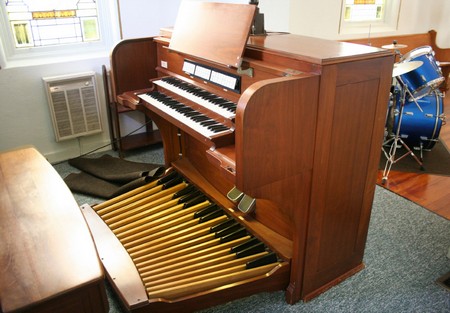 |
Sitting next to another instrument which can be played with both the feet and the hands, the console for this organ resides in an alcove of sorts in the back of the church. With a wall heater near by, the organist never has to worry about getting cold feet (or cold hands). |
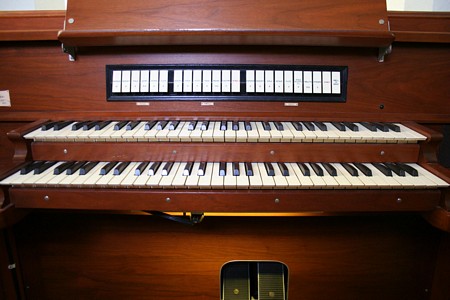 |
Two things stick out
in this photo.
First, there are no thumb pistons allowing for preset registrations to
be stored. This means all stops must be manually changed by the
organist. Second, for an organ with only five ranks there are a lot of stop tabs. Welcome to the world of borrowing where pipes assume alter egos by representing multiple stop names on the console. |
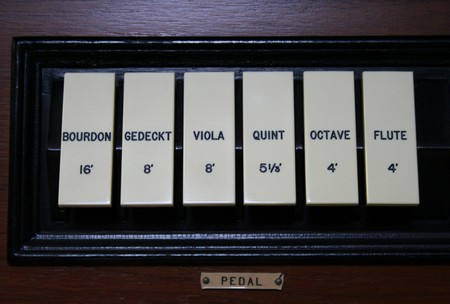 |
This organ console has tilting tablets rather than push tabs or draw knobs. Here we see the six stop tabs which make up the Pedal Division of the organ. |
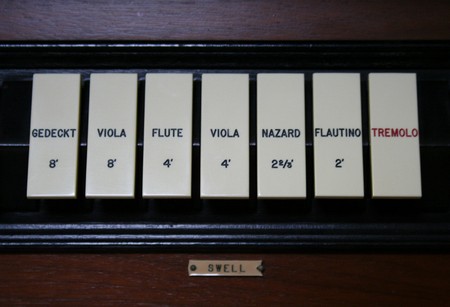 |
Even though all of the
pipes are under expression, the organ console maintains separate Great
and Swell Divisions. This allows the organist to play Swell stops on
the upper manual or keyboard separate than the Great stops played on
the lower manual. On this organ, the Swell Division is the only one with a stop for the Tremolo. |
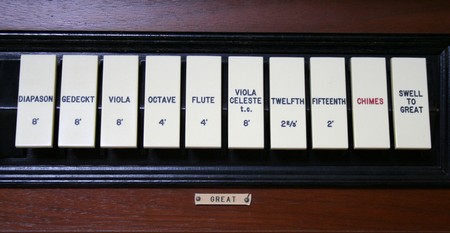 |
The bank is open! Lots of "borrowing" going on in the Great Division. The only true ranks are the Diapason, Gedeckt, Viola, and Viola Celeste. The Octave and mutation stops (Twelfth and Fifteenth), are probably from the Diapason rank. Also note the stop tab for the Chimes, and the coupler for linking the stops selected from the Swell Division with those from the Great Division. |
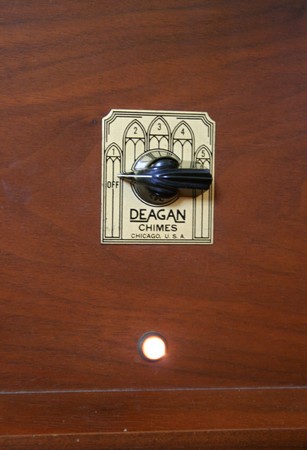 |
A good set of chimes
can really give the organ sound a nice touch to it. The organist is
able to control the volume of the chimes with this switch. The higher
the number, the harder the hammer hits the chime, thus a louder sound. These chimes were built by the J.C. Deagan Company, which first started building instruments in 1880. Here are a couple links about the company and its founder, J.C. Deagan. J.C. Deagan Deagan Organ Chimes |
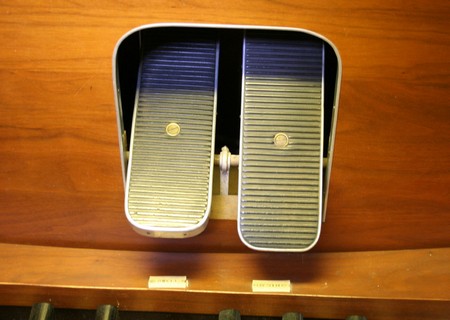 |
Down under we see the expression pedals for the Swell (left) and Crescendo (right). The pedals are close enough to each other where the organist can press both pedals at the same time. |
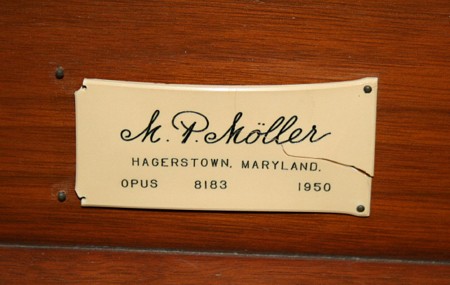 |
M.P. Möller Pipe Organ Company was founded in 1875 and closed up shop in 1992. It built over 11,000 pipe organs during its lifetime making it one of the most prolific pipe organ builders in the world. Many of the organs were of the "Artiste" product line. These were three to nine rank instruments, perfect for smaller venues which did not require the resources of a larger instrument. |
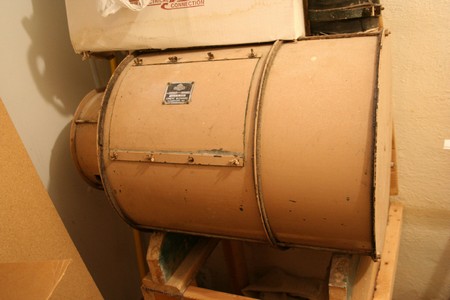 |
No,
the blower is not part of the console, but the console is usually where
the switch is located to turn the blower on. Tucked away in the basement of the church is the blower for the organ. Due to past flooding problems in the basement, the blower is elevated off the floor. The location of the blower gives all home organ owner wannabes an idea of where to put the blower! |
 |
Here is the builder's plate for the organ blower, which received a rather artistic splattering of paint at some point in the past. The second line reads "400 & 3.5" which likely means 400 CFM (cubic feet per minute) @ 3.5" static wind pressure. Though a small blower, it provides plenty of air for an instrument of this size. |